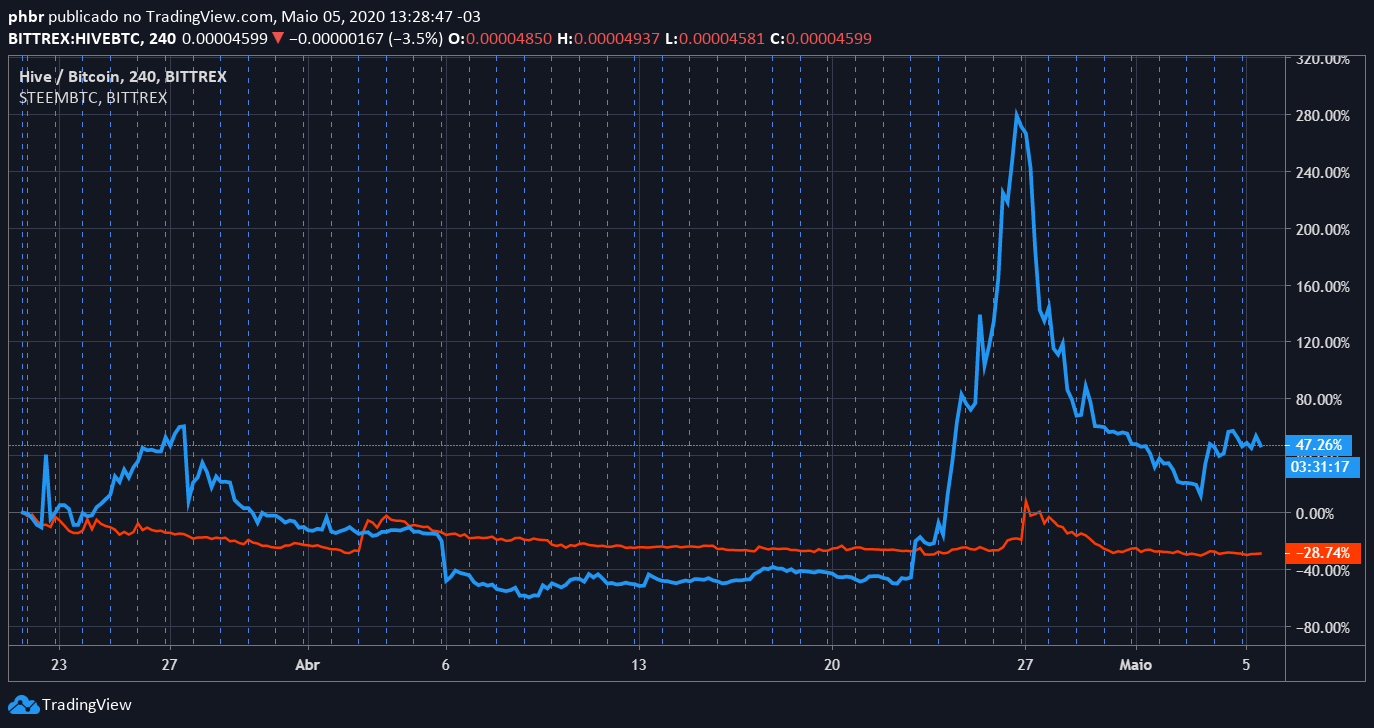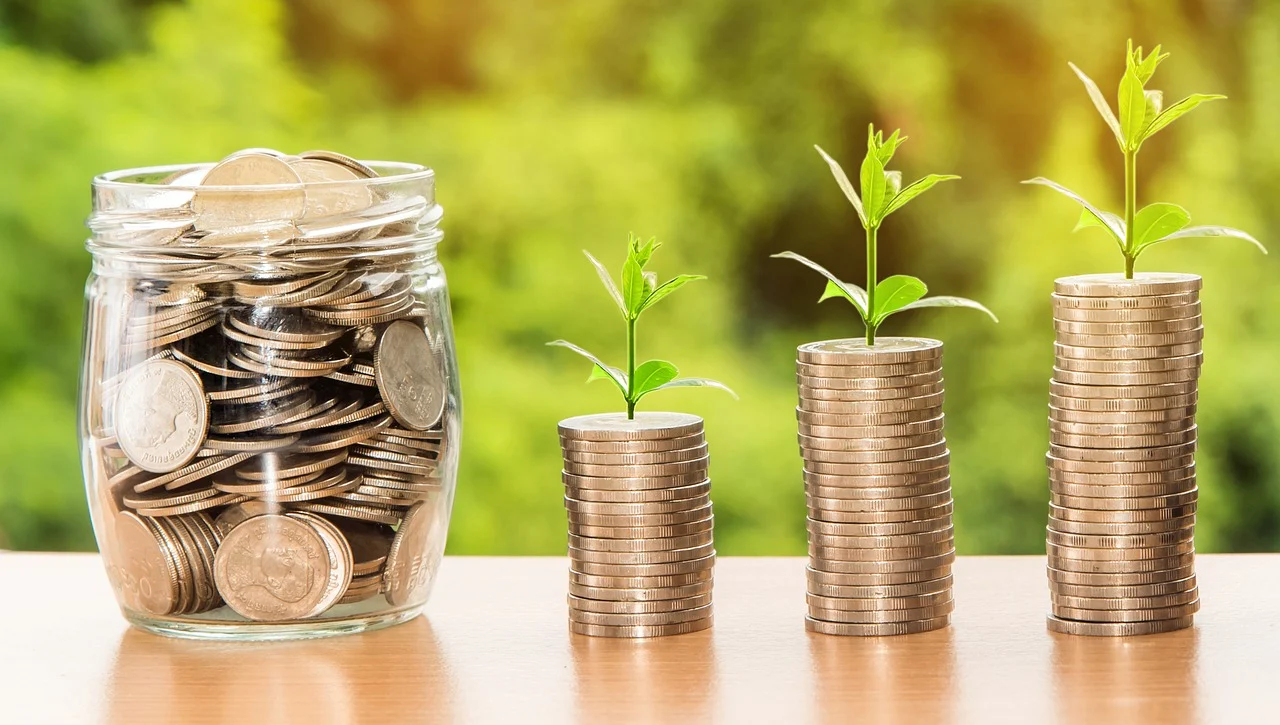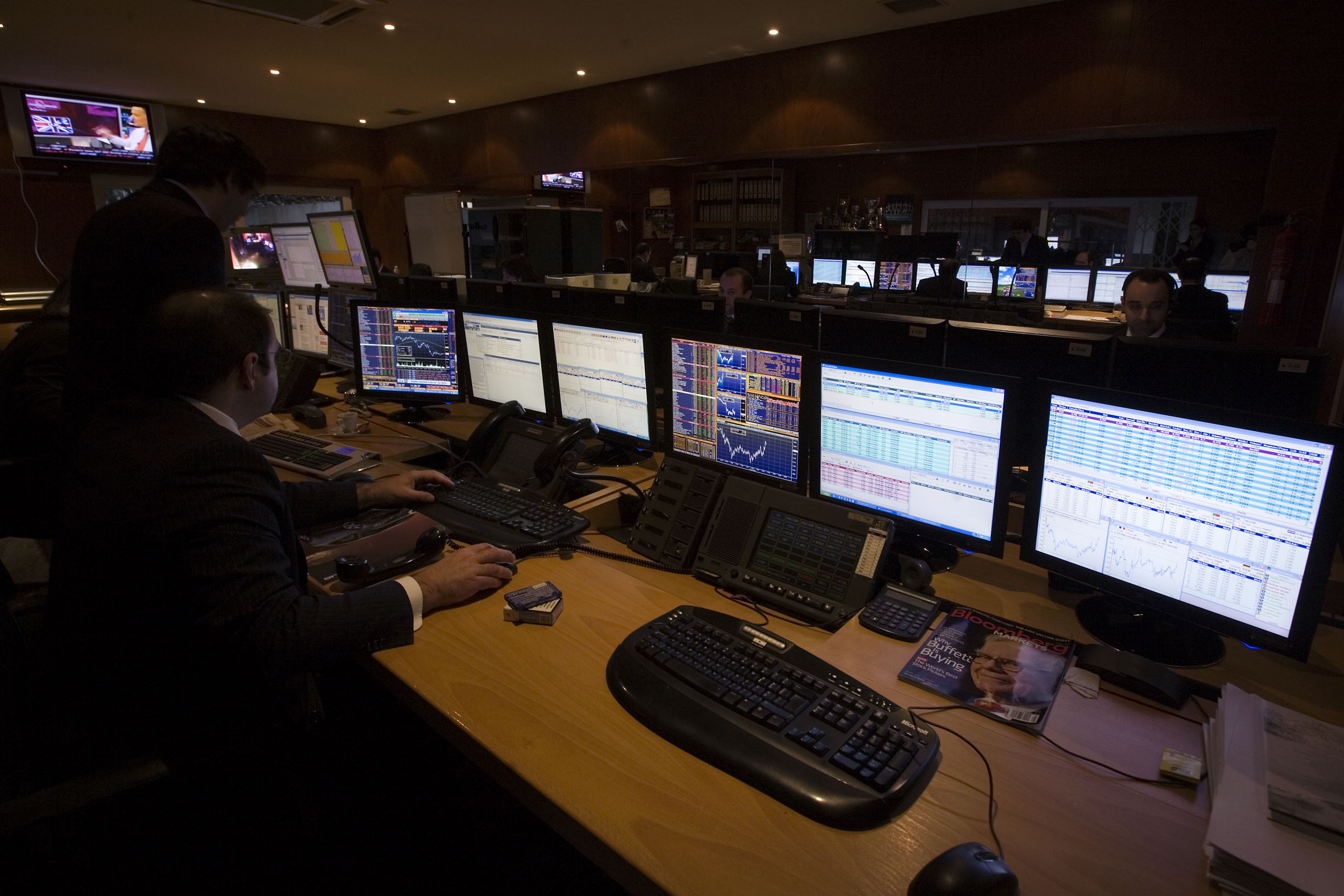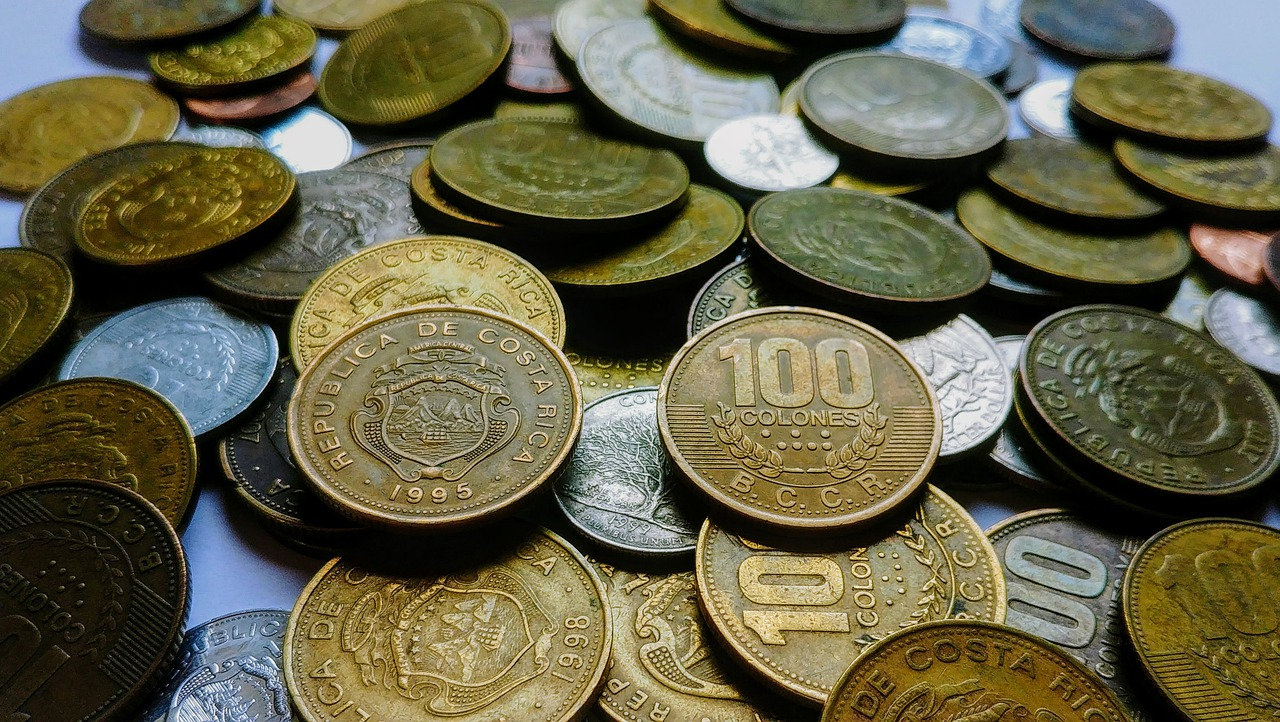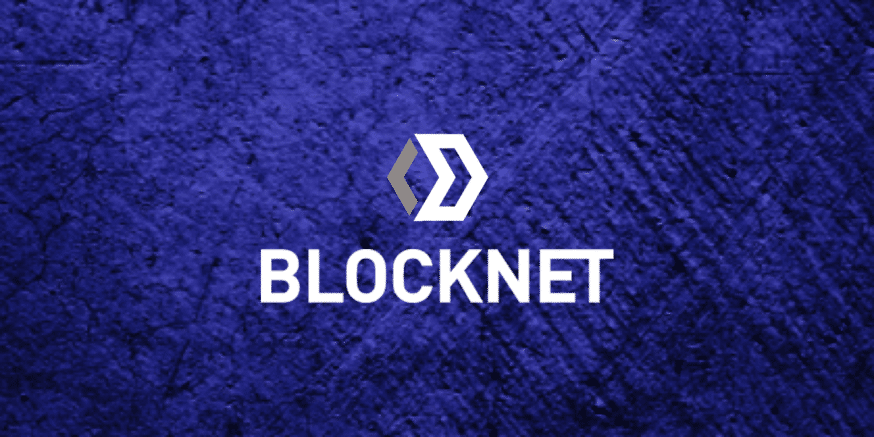
Part 1 - Law of Supply and Demand Definition and Explanation OR Why the @sbdpotato experiment just won't work
So this article got really big, because i tried to detail all the mechanisms behind the SBD peg, because this is an essential knowledge to understand what @sbdpotato is trying to achieve.
If you already know or don't want to know about what make the SBD peg work, jump straight to the TL;DR or to the conclusion sections at the end.
But if you like the economy aspects of the Steem blockchain, enjoy yourself reading this big wall of text!
Fiat Currencies peg
Let's start this talk with the basic idea of pegging a currency to another. If you want to dive deeper on this subject, this article is a great start.
When a government decides (for whatever reason) that it's country currency must be pegged to another, they start to implement some economic mechanisms to make sure that this become true.
For example, when Brazilian Real (BRL) was implemented it was pegged with the US dollar (USD).
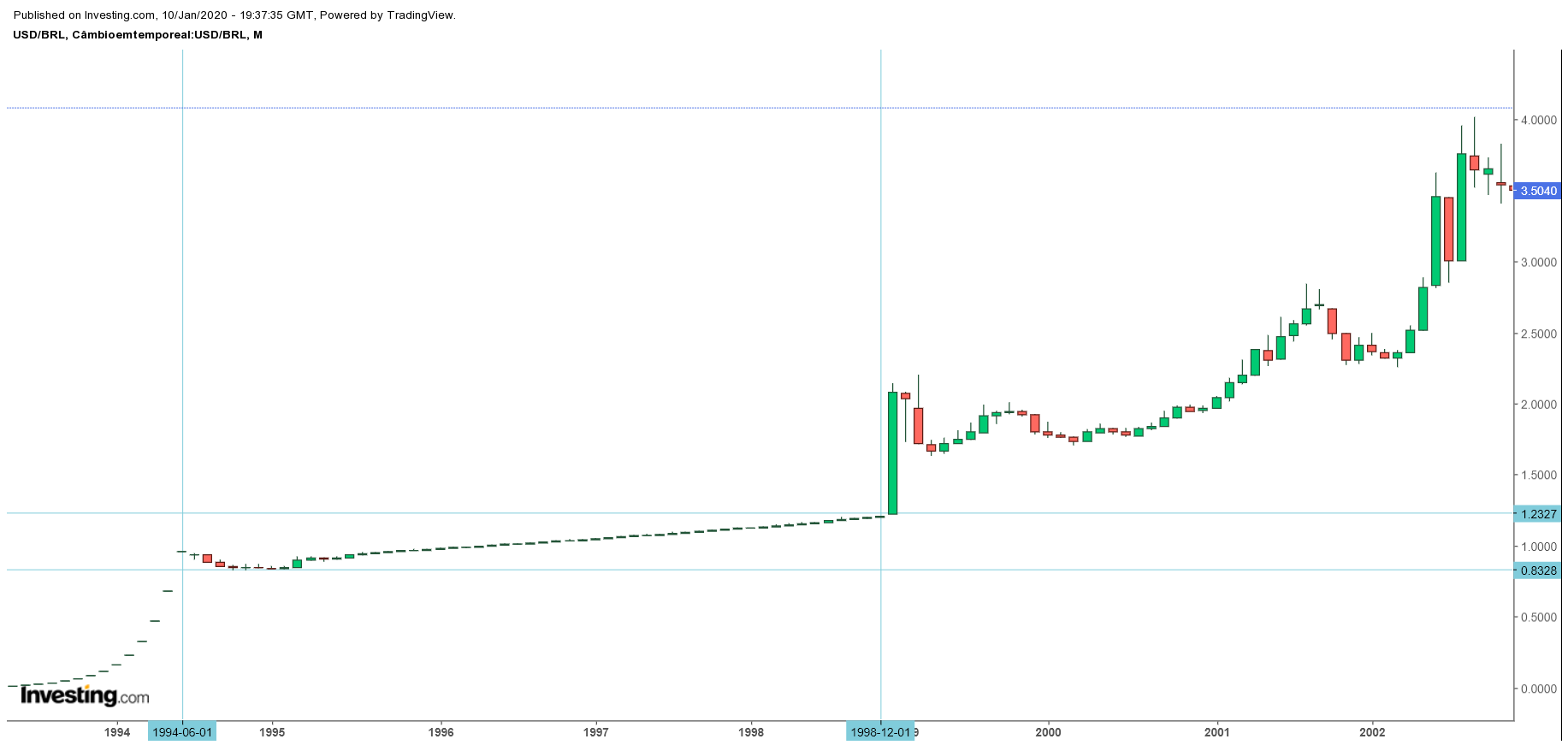
As you can see above, between 1994 and 1998, the brazilian government was actively working on the markets to hold the USDBRL rate at 1.
Some of the economic mechanisms used by the government were:
- Selling USD from it's reserves on the market to put downward pressure on the price (or buying, if the opposite direction were needed)
- Limit the amount of USD that could be negotiated by other entities each day.
This peg was intended to be temporary until there were enough internal economic stability, like a lower inflation. After 1998, the peg was revoked.
How cryptocurrency peg work (the stablecoins)
There is a lot of different models, and here is a good introduction on the subject.
The article above even talk about SBD, with an interesting quote:
Each SBD is backed by exactly one US dollar worth of Steem. The details behind how all of this works are rather mysterious and many who have analyzed the white paper still don’t understand it.
"Many who have analyzed the whitepaper still don't understand it." I can't disagree with that....
But let's talk about the most famous of the crypto stablecoins: Tether USDT, and the basic model for almost every other stablecoins that exists today.
Tether holds a reserve of USD that is equivalent 1:1 of the amount of USDT in circulation. Here is how it works:
- You deposit 1000 USD on the Tether company account
- You recieve back 1000 USDT
- You can use the USDT as you will
- When you want you money back, you send the USDT to the Tether company, they pay you the same amount in USD
Simple and effective. In the case of USDT the problem here is that it isn't exactly decentralized/trustless, so you have to trust that the Tether company won't disappear overnight with the funds they are holding.
But if you check how other stablecoins that are gaining traction, you will see the same models, except some are using smart-contracts to hold the funds.
What about SBD peg?
This is where things start to get interesting.
As written in the genesis whitepaper SBD uses an economic model that is based on Supply and Demand, with the Steem blockchain (and the witnesses acting as the "government", adjusting the rates (economic policy) at wich more SBD (and STEEM) is printed (increasing supply) and how much return anyone can recieve for buying and holding/converting SBD (increasing demand).
Important to note that the keyword here is increase. As i wrote on the article about the Law of Supply and Demand:
In the end, artificially decreasing supply on the market won't have any long term effect, because the majority of people in the world won't see a good reason to spend money on SBD, and will be more willing to spend it on other similar asset that have more actual value.
Less things to sell doesn't make that thing more expensive if there are no buyers.
The blockchain is programmed to increase printing (increase supply and inflation, reducing the value of the SBD) or stimulate people to buy SBD on the market (increase demand, creating a upward force on the price).
It is like a real world government, setting the ecnomic rules/policies about money printing (STEEM and SBD) and base interest rates.
In essence, the SBD peg isn't a fixed peg like USDT, but the blockchain (through the witnesses) is programmed to adjust its economic parameters in order to create market forces trying to push the SBD price in on direction or another:
There are three economic tools used to push SBD price in one direction or another:
- Conversion (debt payment)
- Debt-to-ownership ratio
- Interest paid for holding SBD
(edit: while writing this article, i made some wrong assumptions about how the debt ratio is calculated, using the external market value wich isn't how it works, but thanks to a talk @timcliff, i understood it better, and i am made some corrections on this part)
Conversion rate (or why everyone should understand how the conversion function works)
First, we need to understand what each of the Steem tokens represent:
- STEEM represents you ownership of the blockchain.
- If you have 1 STEEM, it means you own (1/TOTAL STEEM SUPPLY) percent of the right to use the blockchain
- SBD is described in the white paper as Debt. But i think it would be better described as a Bond, wich is a financial instrument that give it's owner the right to recieve a Debt.
- If you have 1 SBD, it means that you are entitled to recieve 1 USD worth of STEEM from the blockchain
Each SBD pinted/issued is a "promisse" that the blockchain will pay you 1 USD woth of STEEM
Since the printed/issued STEEM in circulation isn't owned by the blockhain, the debt can only be paid is the blockchain print/issue more steem.
If you got a bit confused, imagine this:
Each SBD is like a government bond, and whoever holds it, have the right to claim a payment form the government at any time.
But in this case, the government doesn't have a money reserve, so every time someone claim the debt to be paid, the government have to print more money to pay the bond owner.
The debt payment can only happen if someone "ask" the blockchain for the debt to be paid using the conversion function.
But what is a Conversion?
You won't see this function on steemitwallet.com, but there is others front-ends (like Steempeak) where you can use it:
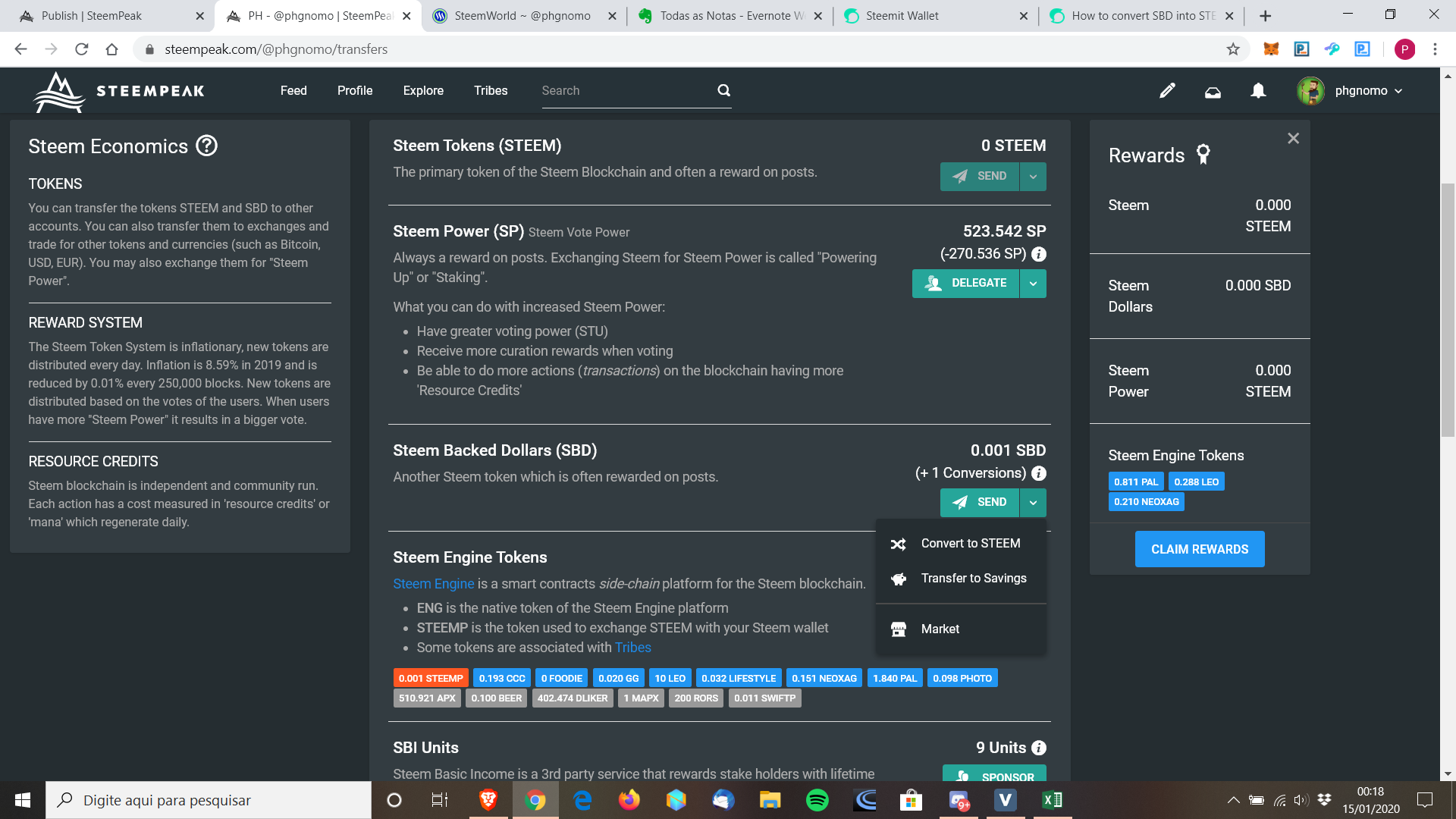
What happens when you use the Convert to STEEM button is that instead of STEEM/SBD exchanging hands between 2 people (wich is what happens when you trade it on a market), you are sending your SBD direct to the blockchain, and when transaction is validated, the blockchain will destroy the SBD and 3.5 days later it was supposed to send you 1 USD worth of STEEM.
Why supposed? The price to be paid for this conversion is determined by 2 rules:
- 3.5 days median of the witnesses price feed
- the "haircut" rule
Every witness must set a price feed when they are processing the blockchain transactions, and the median of this price feed of all witnessess in the last 3.5 days is what will define the price that will be paid for the conversion.
This price feed is independent of the external market prices, and the witnessess can set whatever price they want. This is another economic tool to put pressure on the SBD price.
But how much should be this price feed?
Let's take a look at SBD and STEEM Market Prices:
1 SBD = $0,597249
1 STEEM = $0,124522
1 USD / 0,124522 = 8.030709 STEEM
But if you sell 1 SBD to buy STEEM:
1 SBD = 0,597249 USD
0,597249 USD = 4.79633 STEEM
1 SBD = 4.79633 STEEM or
1 STEEM = 0.208492 SBD
This is the external market SBD/STEEM rate.
Now let's look at the witness price feeds:
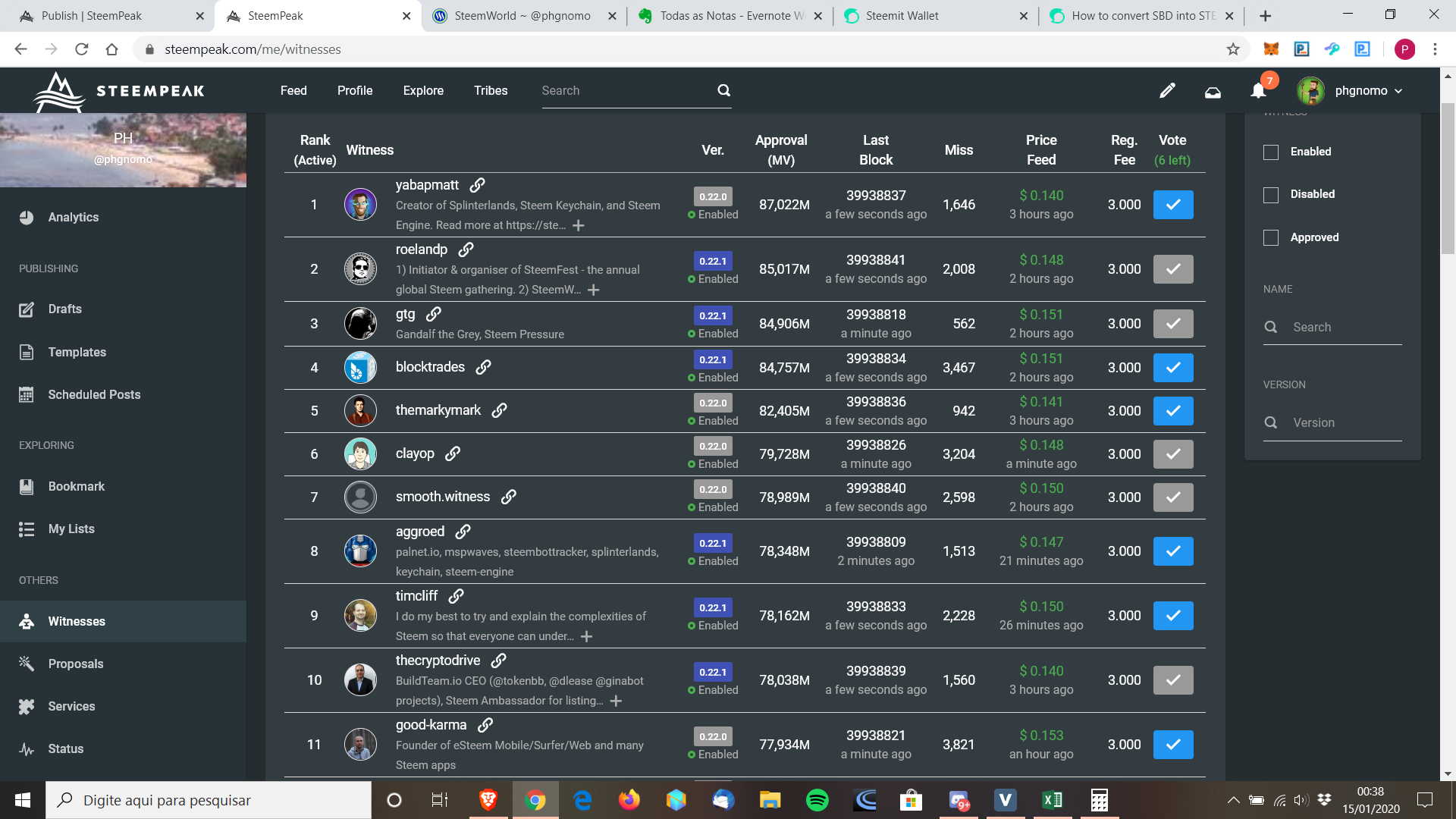
As you can see on the Price Feed column, @yabapmatt is telling the blockchain that he thinks the conversion rate (price that the blockchain must pay for each SBD converted) should be 0.140, or:
1 STEEM = 0.140 SBD
At this rate:
1 SBD = 7.142 STEEM
A lot closer to 1 SBD = 1 USD
As i said before, the witnesses can set the price rate at whatever value they want, but the actual economic policy consensus among the witness is that the price feed must be set as if 1 SBD = 1 USD.
This way, the witness are creating a situation where it becomes profitable to buy SBD on the external markets and use the conversion function, instead of buying STEEM on the external markets.
And this is another toll the blockchain have to create an upward pressure on the SBD price: Incentivize people to buy SBD and convert it, therefore pushing price up, and reducing SBD supply.
But can you see the problem here? If the conversion rate is 0.140, the conversion is highly profitable, and it could create a massive increase of conversion requests, which in turn, would print a lot of STEEM, increase inflation, and devaluate STEEM even more.
That is why there is a STEEM price protection in this system, called the "haircut" rule.
The "haircut" rule, or how the blockchain prioritize protection of STEEM price and not the SBD peg
As we can see above, the consensus among witness right now is that the price feed (aka blockchain conversion rate) should be set at a value that 1 SBD would be converted to 1 USD worth of STEEM.
But, if you try to do it right now, this won't happen, because there is a protection system in place that will override the conversion price to avoid a massive increase of new STEEM printed, wich would create a massive inflation, weakening the economy even more.
The witnesses are setting a conversion price of 0.140, but if you check steemworld.org market info tab, you will see this information:
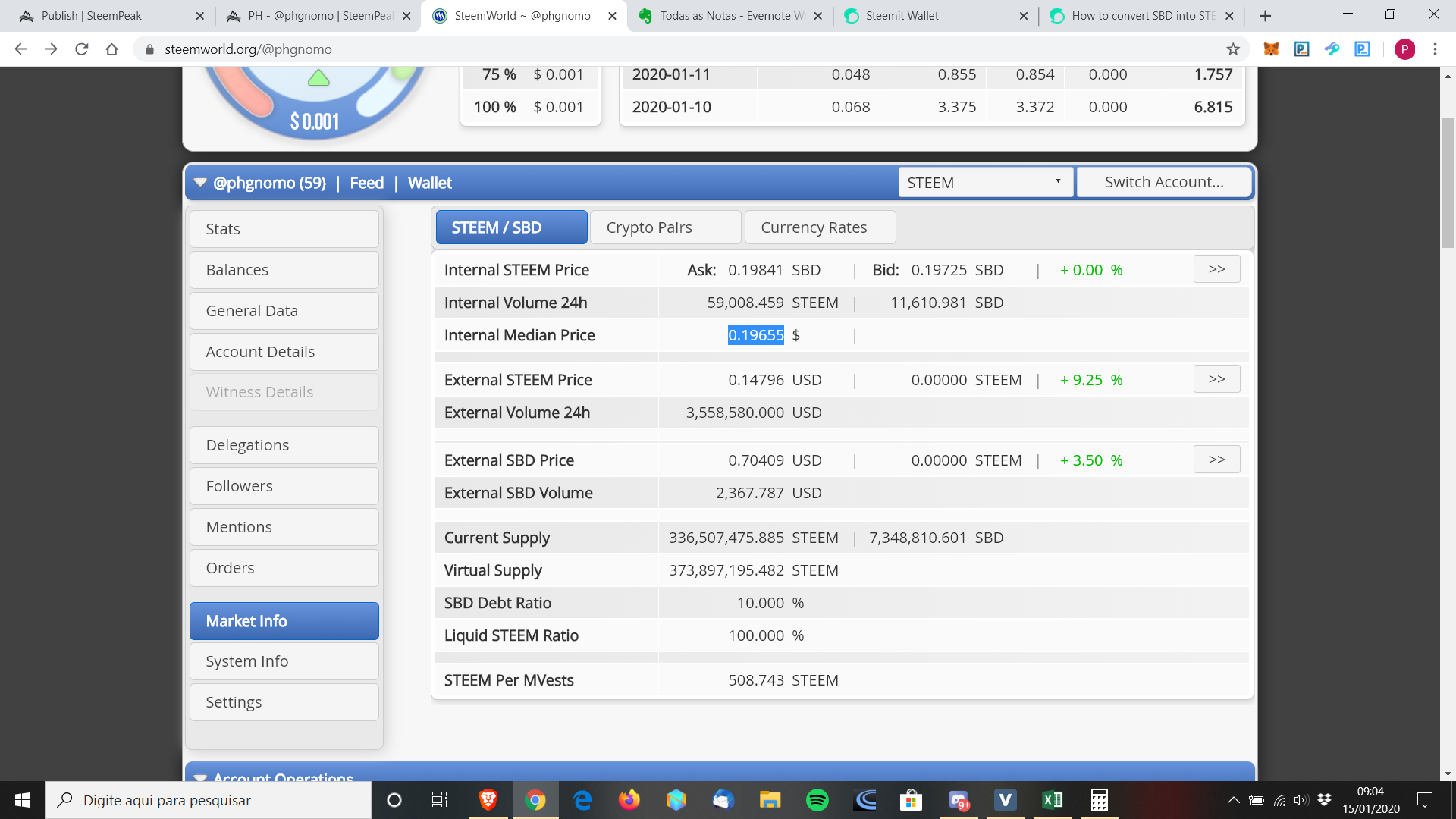
The conversion price at this moment is 0.19655, wich is way higher than the price witnessess are setting on their price feed. That happens because of the "haircut" rule:
If the amount of SBD debt ever exceeds 10% of the total STEEM market cap, the blockchain will automatically reduce the amount of STEEM generated through conversions to a maximum of 10% of the market cap. This ensures that the blockchain will never have higher than a 10% debt-to-ownership ratio.
But what is the debt ratio?
Debt-to-ownership ratio is a bit tricky to explain, but let me try
The debt-to-ownership ratio tell us how much the STEEM supply would increase (generating inflation) if all the debt is paid.
(Here, at first, i made the wrong assumption that the external market value could be used to calculate the debt ratio, wich isn't true.)
When a transaction happens on the external market, there is no debt being paid, but only an exchange of the right to recieve the debt payment.
The debt is only paid when the conversion function is used.
To understand how this works, first lets use as a conversion price (how much is paid by the blockchain to convert SBD/pay the circulating debt) the price feed set by the witnessess above:
Conversion rate: 0.140 SBD/STEEM
Actual STEEM Supply: 336,507,475.885 STEEM
Actual SBD Supply: 7,348,810.601 SBD
If we convert the toal supply of SBD into STEEM:
New STEEM created: (7,348,810.601 / 0.140) = 52,491,504.292 STEEM
New Total SBD Supply: 0 SBD
New Total STEEM Supply: 388,998,980.177 STEEM
Debt-to-ownership ratio: (52,491,504.292 / 388,998,980.177) = 13.49%
So, what is the matter? Paying debts is a good thing right?
Yes, but since there is no new USD entering the system (buying SBD or STEEM), the value of the supply doesn't change, causing a massive inflation:
Market STEEM price: $0,124522
Total STEEM Market Value: (336,507,475.885 x 0,124522) = $41.902.583,912
New total of circulating STEEM Supply (aka Virtual Supply): 388,998,980.177
New Expected STEEM price: ($41.902.583,912 / 388,998,980.177 ) = 0,107719
% of expected price decrease: 13.49%
So, overnight, STEEM would lose 13.49% of it's market value if all SBD were converted at the same time.
This wouldn't exactly happen overnight, but this new supply of STEEM could be expected to be sold on the market, creating a downward force that evetually would hit the expected lower price.
That is why the debt ratio must be as low as possible, as a high debt ratio indicates a bad financial health of the system and a higher potential inflation.
When the debt ratio reaches 10%, the blockchain stops printing SBD to avoid increasing the debt even more.
Since the debt ratio using the witnesses price feed would be higher than 10%, the haircut rule kicks in, and override the conversion price with one that keep the debt ratio from going above 10%
Here is how it's calculated:
Current Supply:
STEEM: 336,507,475.885
SBD: 7,348,810.601
Current conversion price set by the haircut rule:
0.19655
New STEEM that would enter the system if all SBD in circulation would be converted:
7,348,810.601 / 0.19655 = 37,389,013.487 STEEM
Total new STEEM supply after conversion (aka Virtual Supply):
336,507,475.885 + 37,389,013.487 = 373,897,195.482
As you can see, the conversion price is defined in a way that as the SBD value converted to STEEM will never be over 10% ( 37,389,013.487 / 373,897,195.485 = 10%).
But what about the peg?
Let's see how this works in a pratical situation, using the actual market prices of STEEM and SBD.
At the moment of this writing, the prices are:
1 SBD = $0,597249
1 STEEM = $0,124522
First, how much STEEM can i buy with one dollar?
1 USD / 0,124522 = 8.030709 STEEM
This means that, for the system to work as intended, with 1 SBD i must be able to buy 8.090709 STEEM
But since there is no SBD/STEEM listed in any market, we must go through some hops:
With 1 SBD i will recieve 0.597249 USD
Then, 0.597249 USD allow me to recieve 4.79633 STEEM (0.597249 / 0.124522).
So, on the external market,
1 SBD = 4.79633 STEEM, or
1 STEEM = 0.208492 SBD
(this the external SBD/STEEM rate. Remember it, because it will be very important later!)
At the moment the SBD is 40.27% below it's target price.
But what must be changed here for 1 SBD = 8.030709?
There is two sides on this equation that can change: SBD price and STEEM price. Let's check out what happens in 2 scenarios:
SBD price goes up to $1,00 and STEEM price stays the same
if
1 SBD = $1.00
1 STEEM = $0.124522
then
1 USD buy 8.030709 STEEM
1 SBD buy 1 USD
1 USD buy 8.030709 STEEM (1/0.124522)
In this case, the target is achieve and 1 SBD can buy the same amount of STEEM as 1 USD can.
But what if there is a change on the STEEM price?
Now this is where the magic happens. Just check the table below:
As you can see, the only way that 1 SBD can buy 1 USD worth of STEEM is when 1 SBD = 1 USD (the yellow column).
And here is where peg model start to work: If the SBD price goes above 1, if someone is looking to buy STEEM, it will be profitable to Sell any SBD that person holds and then buying STEEM, instead of using USD to buy STEEM. This creates a downward force on the SBD price.
Interest? What interest?
As described on the white paper:
SBD pays holders interest. The interest rate is set by the same people who publish the price feed so that itcan adapt to changing market conditions. All debt carries risk to the lender. Someone who holds SBD without redeeming it is effectively lending the community the value of a dollar. They are trusting that at some point in the future someone will be willing to buy the SBD from them for a dollar or that there will be speculators and investors willing to buy the STEEM they convert it into.
On the "real world", when a debt is created, the value that can be claimed will increase over time, because there is usually an interest that must be paid along with the original value.
And since SBD is an instrument to recieve a debt payment, it's holders are entitled to recieve an interest.
The interest rate to be paid to SBD owners is defined by the witnesses and is also another tool to create a downward force if SBD price is trading above 1 USD:
The primary concern of Steem feed producers is to maintain a stable one-to-one conversion between SBD and the U.S. Dollar (USD). Any time SBD is consistently trading above $1.00 USD interest payments must be stopped.
This make the SBD interest another tool to create a downward force when it's price is trading above 1 USD: If there is no interest being paid, it's more profitable to sell SBD instead of holding it.
But this also works the other way around. If the price is below 1 USD, interest must start to be paid again, and then, it will become profitable to buy SBD and hold it, creating an upward force on the price.
And now you may ask: "SBD is trading below 1 USD, why is the interest rate is still 0%"
The answer: Debt ratio above 10%
Every new SBD entering the system increase the debt, then if interest were paid in this situation, it would increase debt even more, making the Steem economy even worse.
TL;DR
If you didn't bothered/wanted to read all the detailed explanation about how the SBD peg actually works, here is a resume:
- SBD isn't a true USD peg, because there is no funds that will pay 1 USD for 1 SBD, therefore, SBD price will never be fixed at 1 USD;
- The SBD peg isn't 1 SBD = 1 USD. It's 1 SBD must be worth 1 USD of STEEM. Looks like the same thing, but this defines how the peg mechanics works;
- SBD peg is achieved with a set of economic rules and policies, some automated, some defined by the witnessess, to create market forces:
- Rules/policies that creates downward (when SBD is over 1 USD):
- You will get more STEEM per SBD if you sell the SBD for USD and buy STEEM with the USD;
- No interest should be paid (parameter defined by the witnessess), therefore making it less interesting to hold SBD.
- Rules/policies that creates upward forces (when SBD is below 1 USD):
- Interest should be paid (parameter defined by the witnessess), therefore making it interesting to buy and hold SBD;
- The blockchain conversion price (based on the median of the 3.5 witnessess price feed) must be defined at a point that pays more STEEM per SBD than the external market, therefore creating a incentive (profit) to buy SBD on the external market, and converting it to STEEM inside the blockchain.
- There is some protections in place, to avoid that the forces created by the above policies have a bad influence on the economy:
- The higher the debt-to-ownership ratio is, less SBD will be printed by the blockchain to avoid increasing the debt (and potential inflation created through conversions). If the debt ratio goes above 10%, no more SBD will be printed.
- If the debt ratio is above 10%, and the SBD price is below 1 USD, the system will set a conversion rate that is different from the witnessess price feed, making sure that the internal debt ratio never go over 10%
- Rules/policies that creates downward (when SBD is over 1 USD):
As stated on the white paper:
It is our belief that these rules will give market participants confidence that they are unlikely lose money by holding SBD purchased at a price of $1.00. We fully expect there to be a narrow trading range between $0.95 and $1.05 for SBD under normal market conditions.
Under normal market conditions
So, if you are thinking that the SBD peg isn't working, you are wrong. The system is working as intended.
We are at a point where SBD is below 1 USD, and the external debt ratio is over 10%, therefore there is no new SBD being printed, no interest being paid, and the conversion rate is set to a price where the internal debt ratio will never go above 10%.
And this happens to avoid a high inflation, wich would cause a devaluation of the STEEM token.
The moment the debt ratio goes below 10%, the mechanics described above (interest and better conversion price) will start to work again, and a upward pressure on SBD price will start to appear.
Debt ratio will get lower if:
- STEEM price increase
- STEEM supply increase
- SBD price decrease
- SBD supply decrease
What this have to do with @sbdpotato (Conclusion)
(edit: i adjusted some of the conclusions after discussing some aspects with @smooth, as you can see on the comments)
After researching a lot about how the Steem economy system works, i reached some more concrete conclusions about the effects of the @sbdpotato experiment:
- The logic they are using as a base for the experiment is right, and go as this:
- Recieve reward from the posts in STEEM
- Trade STEEM for SBD on the internal market every 10 minutes (decreasing the internal market SBD/STEEM rate, increasing SBD price and decreasing STEEM price)
- Convert SBD to STEEM through the blockchain conversion function (reducing SBD supply, and increasing STEEM supply);
Here is a small simulation of how this affect the economic parameters if they convert 1 million SBD:
Below is a snapshot of the real Steem economy at a point of time
Now, if we convert 1 million SBD in STEEM, these are the results:
As you can see above @sbdpotato project is doing 2 things:
- Decreasing the Debt ratio (wich is good)
- Increasing STEEM suply/creating inflation (wich is bad, can't be avoided)
But the is one thing @sbdpotato experiment isn't doing:
It isn't affecting SBD external market price because it isn't buying SBD from the external market!
The counter-argument presented is that the external market would adjust to internal market due to arbitrage operations executed by bots and humans. While this is true, i think that this have an impact over the external market price mostly because of the low liquidity on the exchanges. The arbitrage operation is short-term and work on both directions, and for it to be profitable it can't have a impact on the price, or it would reduce the profitability of an operation on the other direction.
So, the better way to actually impact the price is to bring the proposed process to the outside markets.
As i wrote on the first article about this subject, the SBD price will only rise if there is an actual demand on the external market.
This could only be achieved by the @sbdpotato experiment if they sold the STEEM for USD on an external market, use that USD to buy SBD and then convert it back to STEEM inside the blockchain. That way, they would create a real demand and would reduce SBD supply at the same time.
A secondary problem: @sbdpotato interaction with @burnpost experiment
Now things get a bit more tricky. As you may also know, there is a @burnpost experiment going on, that burn all STEEM it recieve as a reward, sending it to @null account.
While the idea is to reduce the STEEM supply (therefore lowering inflation), and (in theory) increasing STEEM price, @burnpost (and any other actions sending STEEM to @null) is actually slowing down the resolution of the debt ratio problem, making the recovery of the STEEM economy happen at a slower pace.
Since decreasing supply doesn't have an effect on the price increase (only demand does), burning STEEM isn't helping in increasing the STEEM market price, but only helping to slow down the price decrease.
Here is what happens when the STEEM supply decreases:
Before the burning:
After the burning:
(this is just an example to show what happens when STEEM supply is reduced. @burnpost don't burn the already circulating supply, only reduce how much the STEEM supply increase)
So, yes, burning STEEM creates a deflation, but also increase the Debt ratio, wich makes the Steem economy even more fragile, and what is happening here with both experiments running is:
- @sbdpotato is decreasing the debt ratio
- @burnpost is slowing down the debt ratio decrease
Since both experiments are happening at the same time, they are creating a situation where they are pushing the debt ratio in different directions, causing the target balance (lower debt ratio) to be reach at a much slower pace.
How to make the @sbdpotato have a real effect on the peg
First of all, @sbdpotato and @burnpost experiments can't co-exist. The effect one creates on the Steem economy nullifies the other, and they are creating a situation where the debt ratio will recover at a much slower rate.
If @burnpost stops and @sbdpotato continues this would help lower the debt ratio, and over time, the economy mechanics needed to push the SBD price up (Interest and better conversion rate) would be activated, and incentives to buy/hold/convert SBD would start to happen, wich could eventually bring the SBD price to 1 USD.
But the only way for @sbptotato to actively have an effect on the SBD price is to use the STEEM rewards to buy SBD on the external markets, and convert it inside the blockchain.
If @sbdpotato stops and @burnpost continues, this would reduce the STEEM supply increase, wich would slow down the debt ratio recovery, and the SBD peg would still be on "hold" (No incentives would be created to buy/hold/convert SBD as long as the debt ratio is above 10%).
It could maybe increase the STEEM price, bringing the debt ratio down but it's very unlikely, because again, changing the supply doesn't move the price.
A possible solution to this situation (as discussed with @smooth in the comments) is that, while the debt ratio is above 10% no STEEM would be sent to @null, allowing the debt ratio to recover at a normal pace. The burning could start again once the debt ratio is back to accepable levels.
So, my final conclusion, after all this research is: @sbdpotato could work, but only if 2 conditions are met:
- @burnpost experiment stops or change the burning policy (pushing debt ratio down and increasing incentives to buy/hold/convert SBD);
- Use the rewards to buy SBD on the external markets (pushing the SBD price up).
Besides that, here is a few possible solution to help with the SBD peg:
- Make the "convert SBD" visible again on the steemitwallet front-end;
- Also, make it visible wich is the actual convertion price while also explaining what are the risks of using this tool (like the 3.5 days delay that will have another convertion price), so everyone can decide for themselves if it is worth to use the SBD conversion;
- Witnesses should increase awareness about the convertion function, and what it is used for.
- Basically, keeping as many people as possible informed when it might be profitable to use the conversion function (but also informing about the risks of this operation)
But there is still a bit more to talk about!
Next article, i will write about another aspect that makes the @sbdpotato experiment not worth it: price vs value and The outsiders perspective.
That's all i have for now, and thank you for you attention! Please, feel free to keep the conversation going by adding some comments!
